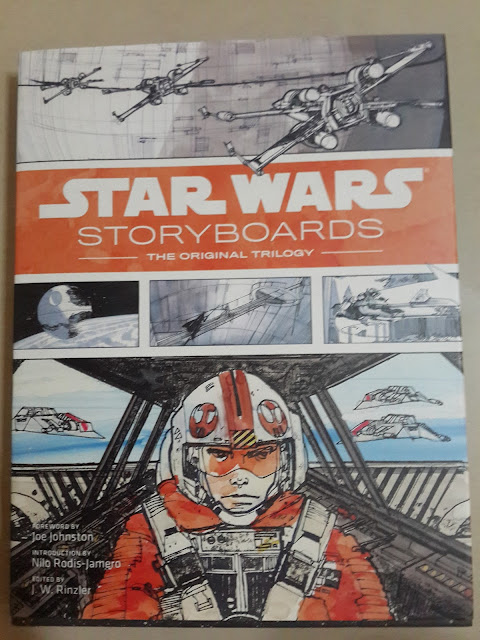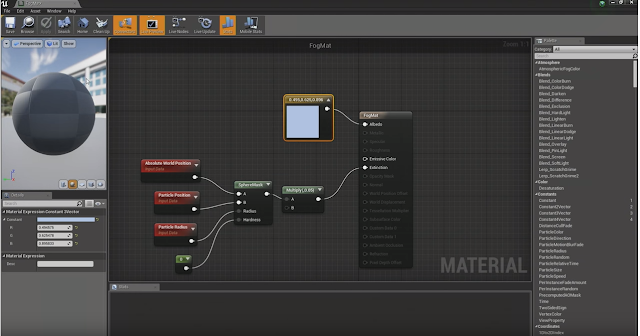Star Wars Original Trilogy Storyboard Art Book
A good friend bought this for me as a gift. It had been on my list of books to buy for quite some time and it came as a huge surprise. This book is a must for anyone interested in the Art of Star Wars or the creation of Storyboards.

A storyboard is a graphic organizer in the form of illustrations or images displayed in sequence for the purpose of pre-visualizing a motion picture, animation, motion graphic or interactive media sequence.


A storyboard is a graphic organizer in the form of illustrations or images displayed in sequence for the purpose of pre-visualizing a motion picture, animation, motion graphic or interactive media sequence.

Star Wars The Original Trilogy Storyboards has 352 pages. Presented in hardback and great paper quality. The storyboards included are split between Episodes IV, V and VI, with 82, 112 and 142 pages devoted respectively. The quality of detail for each frame is fantastic. Included are storyboard artists Joe Johnston, Ralph McQuarrie, Nilo Rodis-Jamero, Roy Carnon and more. There are 15 artists total which bring the Star Wars universe to life with depth and continuity. A range of different drawing styles, and mediums are included such as in pencil, ink, markers and water colours.
The storyboarding process, in the form it is known today, was developed at Walt Disney Productions during the early 1930s, but George Lucas takes it to another level. Not content with Visual effects, Sound quality he also changed the way films are made from Concept to Compositing.
The storyboarding process can be very time-consuming and intricate. Gone with the Wind (1939) was one of the first live action films to be completely storyboarded. William Cameron Menzies, the film's production designer, was hired by producer David O. Selznick to design every shot of the film.

The storyboarding process, in the form it is known today, was developed at Walt Disney Productions during the early 1930s, but George Lucas takes it to another level. Not content with Visual effects, Sound quality he also changed the way films are made from Concept to Compositing.
The storyboarding process can be very time-consuming and intricate. Gone with the Wind (1939) was one of the first live action films to be completely storyboarded. William Cameron Menzies, the film's production designer, was hired by producer David O. Selznick to design every shot of the film.

Storyboarding became popular in live-action film production during the early 1940s, and grew into a standard medium for previsualization of films. Pace Gallery curator Annette Micheloson, writing of the exhibition Drawing into Film: Director's Drawings, considered the 1940s to 1990s to be the period in which "production design was largely characterized by adoption of the storyboard". Storyboards are now an essential part of the creative process.
In animation and special effects work, the storyboarding stage may be followed by simplified mock-ups called "animatics" to give a better idea of how the scene will look and feel with motion and timing. At its simplest, an animatic is a series of still images edited together and displayed in sequence with rough dialogue and/or rough soundtrack added to the sequence of still images (usually taken from a storyboard) to test whether the sound and images are working effectively together.
Comic books writers use storyboard type drawings for their scripting of comic books, often indicating staging of figures, backgrounds and balloon placement with instructions to the artist as needed often scribbled in the margins and the dialogue/captions indicated.
For me this is the transition of interest, I read a lot of comics and I enjoy drawing storyboards. For me they are almost the same thing. They need to convey an idea. Storyboards have the luxury of foot notes whilst comics contain dialogue.
I would recommend this book within a heartbeat and look forward to the new Disney Franchise!
In animation and special effects work, the storyboarding stage may be followed by simplified mock-ups called "animatics" to give a better idea of how the scene will look and feel with motion and timing. At its simplest, an animatic is a series of still images edited together and displayed in sequence with rough dialogue and/or rough soundtrack added to the sequence of still images (usually taken from a storyboard) to test whether the sound and images are working effectively together.
Comic books writers use storyboard type drawings for their scripting of comic books, often indicating staging of figures, backgrounds and balloon placement with instructions to the artist as needed often scribbled in the margins and the dialogue/captions indicated.
For me this is the transition of interest, I read a lot of comics and I enjoy drawing storyboards. For me they are almost the same thing. They need to convey an idea. Storyboards have the luxury of foot notes whilst comics contain dialogue.
I would recommend this book within a heartbeat and look forward to the new Disney Franchise!


